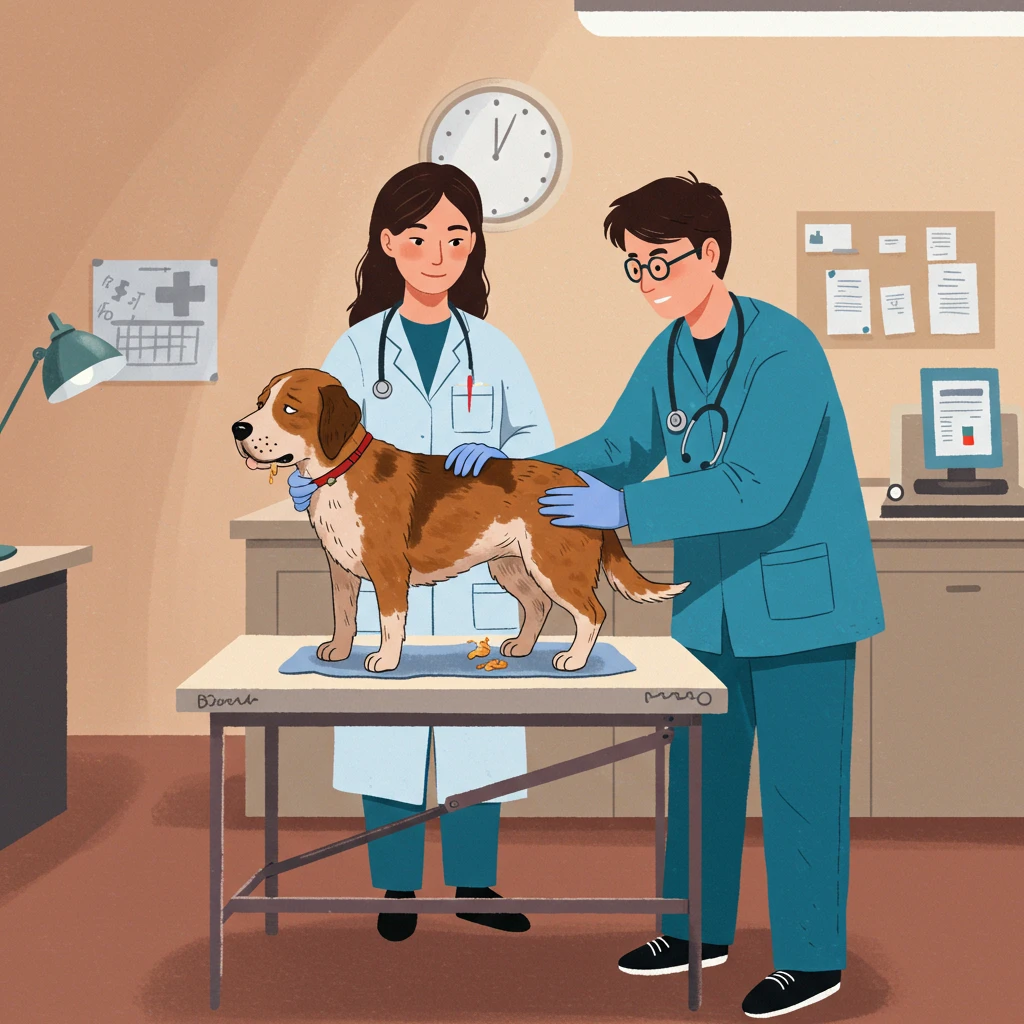Ear infections, also known as otitis, are common conditions in dogs. These infections can be caused by various factors, including bacteria, fungi, or parasites. Symptoms can vary but often include itching, redness, and discharge. It’s essential for dog owners to recognize the signs of an ear infection to consult a veterinarian quickly, as early intervention can prevent more serious complications.
Types of Ear Infections
Otitis Externa
Otitis externa is the most common infection in dogs. It affects the external ear canal and is often caused by bacteria or yeast. Dogs with floppy ears, like Cocker Spaniels or Basset Hounds, are more susceptible to developing otitis externa due to moisture and warmth trapped in their ears.
Examples of symptoms:
- Intense itching
- Redness and swelling of the ear
- Foul-smelling discharge
Otitis Media
Otitis media is an infection that affects the middle ear, located behind the eardrum. It can result from untreated otitis externa or an upper respiratory tract infection. This type of infection can be more difficult to diagnose because the symptoms are less obvious.
Examples of symptoms:
- Incoordination
- Head tilt
- Pain when chewing
Otitis Interna
Otitis interna is the most severe infection, affecting the inner ear and potentially leading to balance and hearing problems. It’s usually the result of untreated otitis media.
Examples of symptoms:
- Disorientation
- Vomiting
- Loss of balance
Causes of Ear Infections
Ear infections in dogs can be caused by various factors, including:
1. Allergies
Food or environmental allergies can cause inflammation of the ear canal, making the dog more susceptible to infections.
2. Moisture
Exposure to water, especially after bathing or swimming, can promote the growth of bacteria and yeast in the ear.
3. Parasites
Parasites, such as ear mites, can cause irritation that leads to infections.
4. Anatomical Abnormalities
Certain dog breeds have ear anatomy that predisposes them to frequent infections. Floppy ears or narrow ear canals are typical examples.
Diagnosis of Ear Infections
The diagnosis of ear infections in dogs relies on clinical examination and additional tests. A veterinarian will examine the ear canal using an otoscope to assess the ear’s condition and look for signs of infection.
Additional Tests
- Discharge samples: A sample may be taken to identify the type of bacteria or yeast present.
- Culture: A culture may be performed to determine the appropriate treatment.
- Allergy tests: In the case of recurrent infections, tests to identify allergies may be recommended.
Treatment of Ear Infections
The treatment for ear infections in dogs depends on the severity and cause of the infection.
1. Topical Medications
Veterinarians often prescribe ear drops containing antibiotics, antifungals, or anti-inflammatories to treat infections.
2. Systemic Medications
In more severe cases, oral antibiotics or antifungals may be necessary. These medications work internally and are often used when the infection has spread.
3. Allergy Treatment
If the infection is related to allergies, a specific treatment plan may be implemented to manage the allergic reactions.
Concrete Examples and Use Cases
Use Case 1: A Cocker Spaniel with Otitis Externa
A Cocker Spaniel owner noticed their dog frequently scratching its ears and having a foul-smelling discharge. After a vet visit, it was diagnosed with otitis externa caused by yeast. The veterinarian prescribed antifungal ear drops, and after a few days of treatment, the symptoms disappeared.
Use Case 2: A Labrador with Otitis Media
A Labrador developed symptoms of incoordination and a head tilt. After an examination, the veterinarian diagnosed otitis media due to a bacterial infection. Oral antibiotic treatment and ear drops were prescribed. The dog showed signs of improvement within the following days.
Key Points and Best Practices
- Prevention: Regularly clean your dog’s ears with an ear cleaner recommended by your veterinarian.
- Avoid moisture: Thoroughly dry your dog’s ears after a bath or swim.
- Monitor signs: Be attentive to itching, redness, or discharge, and consult a veterinarian if necessary.
- Regular check-ups: Have your dog’s ears examined during its routine vet visits.
Conclusion
Ear infections in dogs are common but potentially serious conditions. Early identification and treatment are essential to prevent complications. Dog owners should be attentive to signs of infection and consult a veterinarian if problems arise. By implementing preventive measures, you can reduce the risk of ear infections and maintain your four-legged companion’s auditory health.







